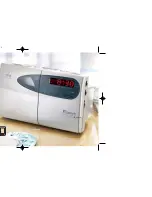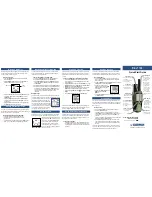
June 23, 2023
page
6
R70SR SNAP SIGNAL™ Serial Data Radio
MultiHop mode star network
Client
Server
Server
Server
Server
Server
Server
Device Settings
DIP Switches
1
2
3
4
Client configuration
On
Off
Off
On
Server configuration
On
Off
Off
Off
MultiHop Mode with a Tree Network Configuration
—A tree network using MultiHop radios is the most powerful wireless system possible;
many repeaters and server can be combined to cover vast areas and get around hills or buildings. In the other networks, the wireless "hops"
are minimized. In this system, you can "hop" as much as you need to. In MultiHop mode, there may be some speed tradeoffs, but it is still
significantly faster and more reliable than a Tree Topology in Serial Mode.
MultiHop mode with a tree network
Client
Server
Server
Repeater
Server
Device Settings
DIP Switches
1
2
3
4
Client configuration
On
Off
Off
On
Repeater configuration
On
Off
On
Off
Server configuration
On
Off
Off
Off
Packet Routing in MultiHop Data Radio Mode
—In MultiHop Data Radio mode, the client radio first discovers all connected Modbus server in
the network, then uses the Modbus ID contained in the incoming Modbus message to wirelessly route the packet only to the radio attached
to the target Modbus server. The packet is then passed via the radio’s serial interface to the Modbus device where it is processed. This is en
tirely transparent to the user. Direct packet-by-packet routing offers an advantage over broadcast addressing with MultiHop paths because
each hop in the path can be retried independently in the event of a packet error. This results in significantly more reliable packet delivery over
MultiHop paths. Modbus IDs 01 through 10 are reserved for server directly connected to the host (local I/O). As such, polling messages ad
dressed to these devices are not relayed over the wireless link. Use Modbus IDs 11 through 60 for remote Modbus server — devices serially
connected to an R70 Server or Repeater — allowing a maximum of 50 attached devices.
© Banner Engineering Corp.
































